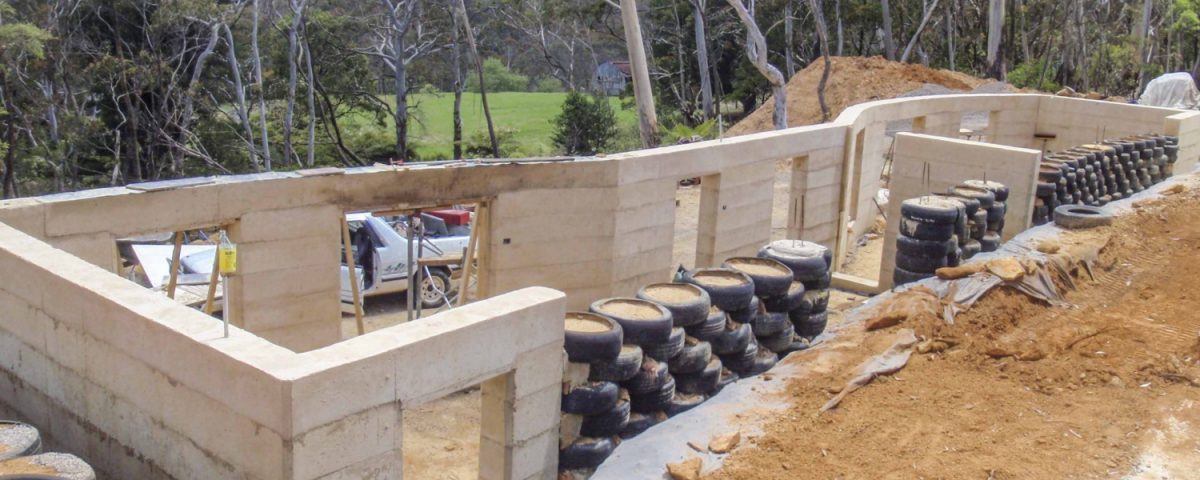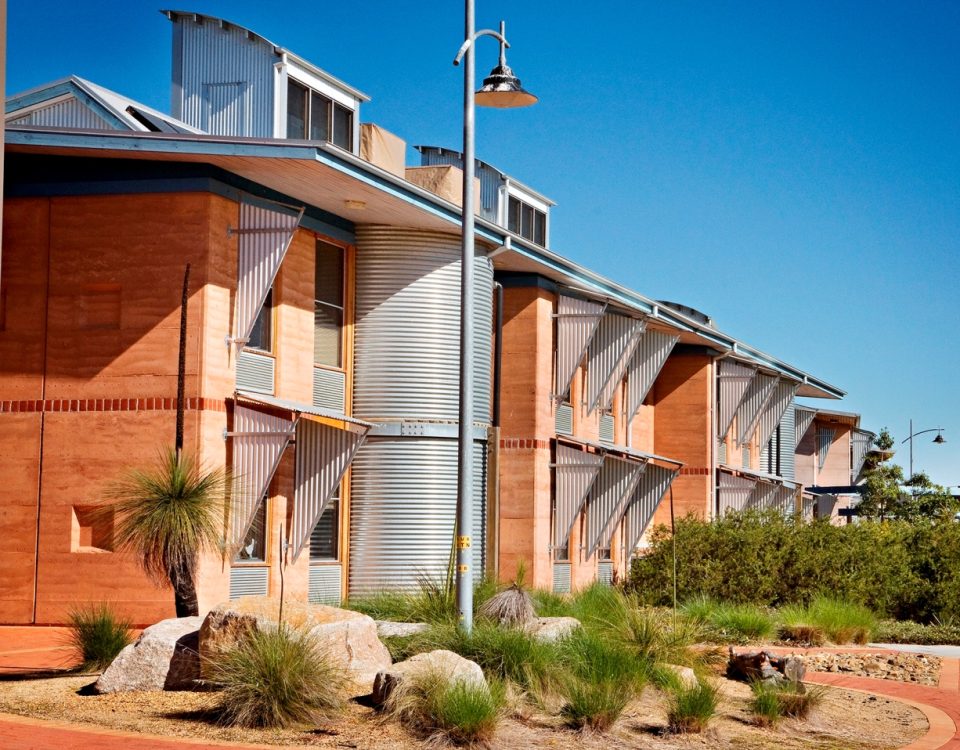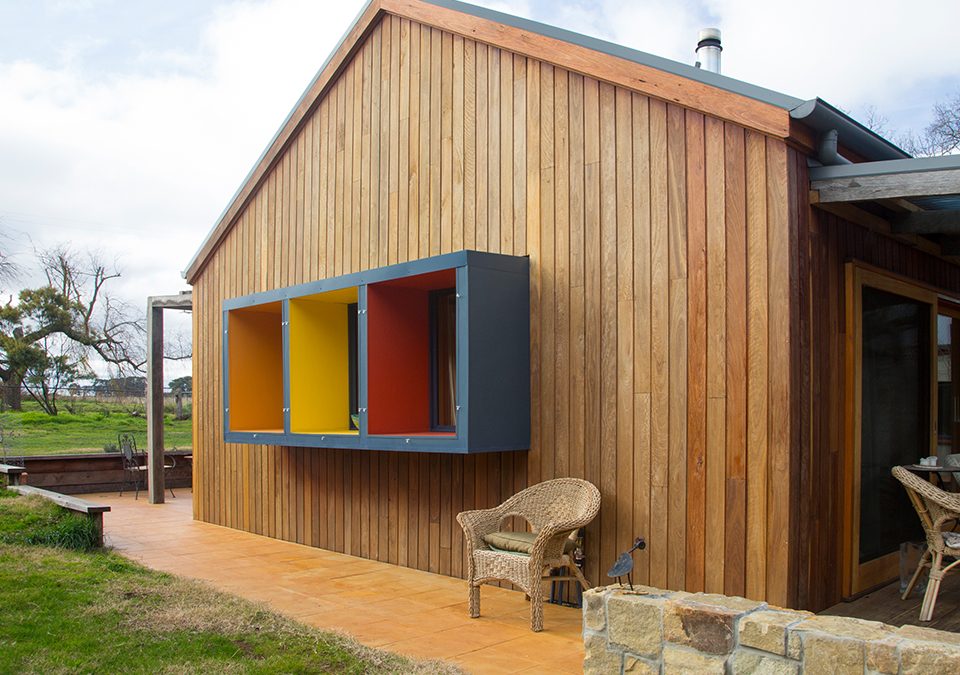
Passive Solar Design 101
06/08/2023
A short history of passive solar design in Australia
10/08/2023Getting Insurance for natural homes should be simple, but it isn’t.
What is the deal with insuring your natural building?
Many in the industry have long been exasperated that there shouldn’t be any difference when looking to insure a building, regardless of the materials being used, particularly if they have been performance tested and fire rated. Most builds (especially in high fire zones) will have to have a BAL (bushfire attack level) assessment as part of the planning and building permit process, and as such they will be considering the relative dangers and flammability of the materials being used. Fundamentally, if the material has been tested and proven to be stable and reliable in most zones in Australia, it should be insurable.
But what does this have to do with getting insurance?
There are two different situations that need to be considered. Firstly, there’s the issue of insuring a straw bale, hemp, mud, rammed earth home that’s already been built versus the need to get insurance for owner building. Both situations require different research and approaches. Insuring a natural home that has been made of mudbricks, rammed earth, hempcrete, cob, light clay straw should be like insuring a conventional home – if it’s been built to the building codes.
A home that has already insured, in a particular region, should be able to be re-insured once sold if there have been no structural or material changes made to the home or property. Best check with the real estate or previous owners for the insurance company or brokers that they used. If there was no insurance on the property, then you will need to start hunting for insurance, and it’d be best to work through a broker who has done this type of work before. Some banks or brokers to consider are Bendigo Bank, NRMA and GIO. You should also be vigilant in getting your home inspected internally and externally for termites and keeping all garden and other buildings or materials away from your home so they cannot get easy access into your home.
For potential owner builders
Insuring a natural home while building it is a different story. If you asked a Registered Builder about having insurance, they’d say it’s crazy to not have it. You must remember that as an owner builder you’re taking on the responsibilities of a builder and that includes the risks. Don’t think you’re automatically covered under your existing home insurance policy because most home insurance policies have exclusions against any loss or damage to the existing house if it arises from construction work. It may be worth reading the owner builder regulations article for your state on the Owner Builder magazine website under Extracts. Before signing a contract with a builder, ask to see the Certificates of Currency for their contract insurance, workers compensation with iCare, home building compensation (home warranty certificate), public liability to $20 million. Their policy needs to cover volunteers if they run a workshop.
Sam Vivers from Viva Living has also written a blog on insuring strawbale homes here.
Sam says:
If you’re the Owner Builder, take out workers compensation with iCare to cover any on-site injuries, building insurance during the build in case something goes wrong and public liability insurance to list a few.
1. Sub contractors
Any sub contractor you employ should
a) hold a licence for the work they will be performing from you
b) should have their own PL insurance – This will provide cover in case anyone is injured due to his actions, i.e. falling over his toolbox and breaking a leg.
c) have their own Workers Compensation policy – else they need to be treated as an employee / labourer and you need to provide Workers Comp.
You should have a contract with the contractor. In most states across Australia, any work over $12,000 requires the contractor to provide Home Warranty Insurance. This may provide some protection against faulty workmanship. But remember, that as an owner builder you are in fact the project manager and the building supervisor and must take on ultimate responsible.
2. Insurance – your own
You then also need your own public liability insurance to cover the sub-contractor, or anyone else, falling over your toolbox! You should also think about insurance against damage or theft of materials during the building process. If you sell your house in less than 6 years you also have to provide Home Warranty insurance for the new buyers. That only needs to be purchased if and when you sell.
3. Labourers
If you employ anyone as a labourer rather than a subbie, then you must treat them as an employee and you need to think about Workers Compensation as well as other employee benefits.
There are specialty insurers that provide sound advice and reliable cover to owner builders. Brokers have significant experience covering construction work and can therefore provide tailored risk advice and insurance cover for both the core risks and specialised risks owner builders face. Some examples are Coverforce and Buildsafe.




